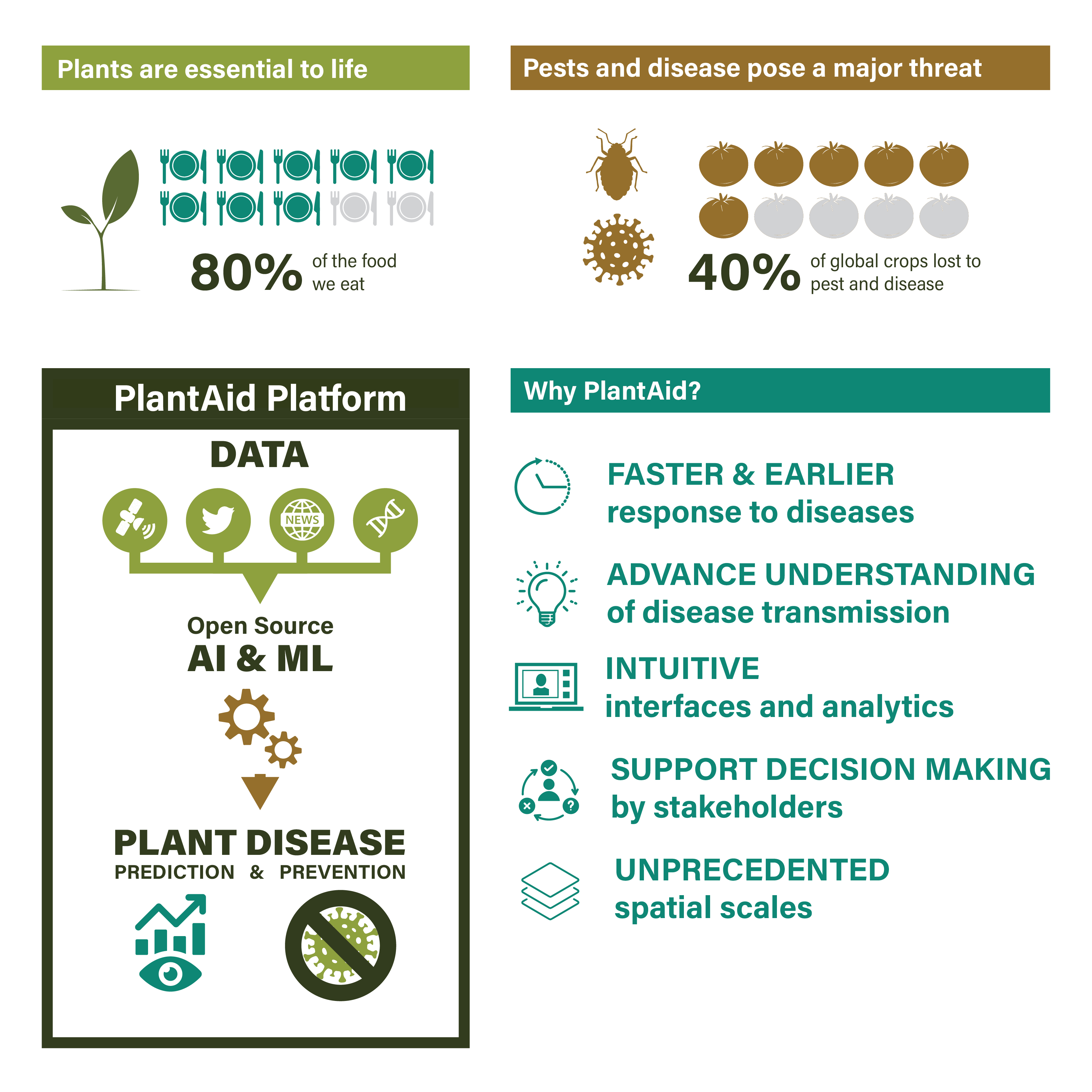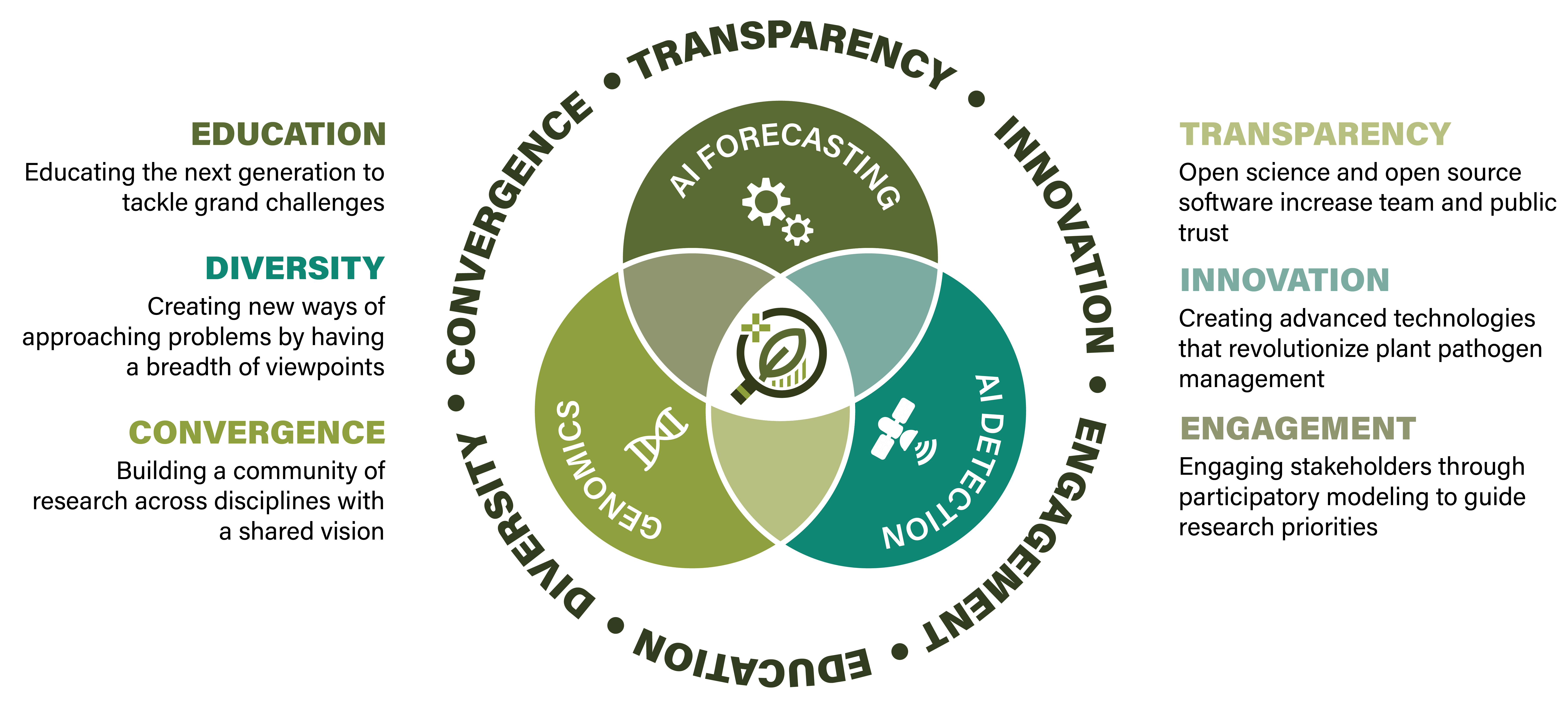We can't find the internet
Attempting to reconnect
Something went wrong!
Hang in there while we get back on track
What is PlantAid?
PlantAid is an Emerging Plant Disease Prediction and Prevention initiative spanning 11 research universities
and centers that emerged from an exciting
National Science Foundation Predictive Intelligence for Pandemic
Preparedness (PIPP)
Grant titled “Real-Time Analytics to Monitor and Predict Emerging Plant Disease”.
This grant allowed us to host the
Predicting the Next Plant Disease Pandemic Symposium (April 5-6, 2023)
and develop the PlantAid Forecasting Platform. We aim to merge technological innovations to improve plant
and human health.

Why PlantAid?
Plants are essential to human health. With expanding global trade and travel, pests and
diseases increasingly threaten global food security. PlantAid merges data from dozens of
sources with artificial intelligence and machine learning algorithms to predict and prevent
plant diseases.

Importantly, in the hands of management stakeholders, the PlantAid Platform will help compare
targeted actions to improve plant pathogen detection, prevention, and mitigation applicable to
a range of global infectious plant diseases.
Who are we?
Starting with a shared vision of plant and human health, we build on the complementary strengths of
our collaborating universities and institutions. While North Carolina State University serves as
the central hub, our collaborating partners bring the range of expertise needed to achieve our research agenda.
Meet the team

Our values

PlantAid Overview
We designed the Plant AID Forecasting Platform to unify our foundational research activities through
stakeholder engagement and use-inspired research. In this framework, multiple forecasting models are
brought together to create an ensemble forecasting platform fed by four iterative feedback loops.
Learn more about the tools and models used in PlantAid
The PlantAid Platform Structure
1. The Calibration Loop
updates as new data are collected from our genomics surveillance and detection teams.
2. The Scenario Modeling Loop
allows stakeholders to interact with the models and see how management decisions change the
potential for disease outbreaks.
3. In the Field Observation and Scientific Feedback Loop, our genomic surveillance team collects and IDs disease causal agents,
determining their lineage, virulence, and any resistance breaking mutations; this feeds into the models to more accurately predict
changes in genetic makeup. Our detection team provides new infection data from AI geo-parsed text-analytics, satellite surveillance,
and field-deployable sensors to the forecast models.
4. In the Participatory Feedback Loop
our stakeholder engagement team collaborates with stakeholders to ensure that their knowledge
and feedback is integrated into the models and interfaces.

